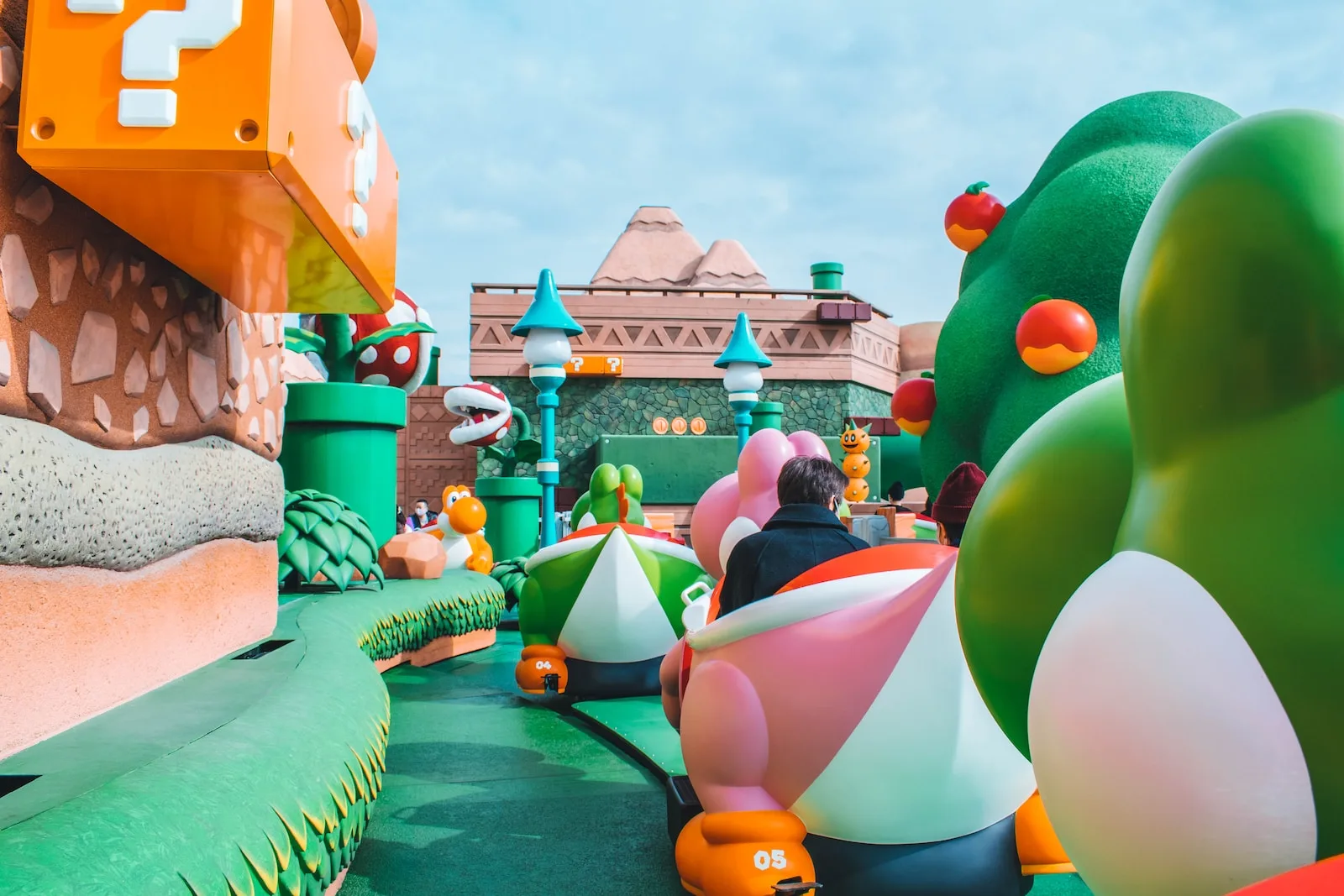Imagine stepping into a virtual world, where every corner you turn holds a mystery waiting to be unraveled. The world around you seems vast, unpredictable, and full of unique landscapes and experiences. As a player, have you ever wondered how these game worlds come to life? In this article, we will explore the fascinating contrasts between procedurally generated and pre-made game worlds, shedding light on the distinct ways in which these two types of environments are created. Get ready to embark on a journey as we compare the intricacies and nuances that make each world a captivating gaming experience.
Definition of Procedurally Generated Game Worlds
Basic Description
Procedurally generated game worlds refer to virtual environments that are created algorithmically through a set of rules and procedures rather than being handcrafted by game developers. These worlds are generated dynamically, allowing for endless possibilities and unique experiences with each playthrough. They can range from expansive open worlds to intricate dungeon layouts, each tailored to provide a fresh and unpredictable experience for players.
Underlying Process
The underlying process of creating procedurally generated game worlds revolves around the use of algorithms and mathematical functions. These algorithms generate a vast array of terrain, objects, characters, and other elements that make up the game world. By utilizing various parameters and randomization techniques, each playthrough becomes a new and distinct experience. The process often involves the use of noise functions, fractal algorithms, and procedural modeling techniques to generate the desired level of complexity and realism.
Common Examples
Some popular examples of games that utilize procedurally generated game worlds include “Minecraft,” “No Man’s Sky,” and “Rogue Legacy.” These games have gained immense popularity due to their ability to offer unique and infinite gameplay experiences. In “Minecraft,” players explore a vast block-based world where every landscape, cave, and structure is procedurally generated. “No Man’s Sky” takes it a step further by generating an entire universe full of planets, each with its own unique ecosystems and resources. “Rogue Legacy” uses procedural generation to create a new castle layout with each playthrough, ensuring that no two runs are the same.
Definition of Pre-Made Game Worlds
Basic Description
Pre-made game worlds, also known as handcrafted game worlds, are carefully designed and created by game developers. They involve a deliberate and manual process of creating the environment, characters, and gameplay elements. Unlike procedurally generated game worlds, pre-made game worlds offer a predetermined and tailored experience for players. These worlds often have a specific narrative, level structure, and visual style that is curated by the developers.
Creation Process
The creation process of pre-made game worlds involves a combination of artistic design, level layout, and storytelling. Game developers use various tools and software to create visually stunning environments, detailed character models, and engaging gameplay mechanics. The process includes concept art, 3D modeling, level design, and the implementation of game mechanics. Game developers have complete control over every aspect of the game world, allowing them to carefully craft the gameplay experience and ensure the desired level of immersion and challenge.
Common Examples
Many popular video games, such as “The Legend of Zelda: Breath of the Wild,” “Grand Theft Auto V,” and “Super Mario World,” feature pre-made game worlds. These games are known for their meticulously crafted environments, intricate level designs, and rich storytelling. “The Legend of Zelda: Breath of the Wild” immerses players in a sprawling open-world environment, meticulously designed to provide freedom, exploration, and emergent gameplay opportunities. “Grand Theft Auto V” offers a massive open-world city that is meticulously designed and filled with detailed landscapes, buildings, and characters. “Super Mario World” presents players with a meticulously designed side-scrolling platformer that offers carefully crafted levels and challenges.
The Development of Procedurally Generated Game Worlds
Process of Development
The development of procedurally generated game worlds involves a combination of programming and design expertise. The development team creates a set of algorithms and mathematical functions that generate the game world dynamically. These algorithms take into consideration various parameters, such as terrain features, object placement, and enemy AI behavior, to create a cohesive and immersive experience. The development team also iterates and refines these algorithms to ensure balance, playability, and visual appeal.
Challenges Encountered
Developing procedurally generated game worlds poses several challenges. One of the main challenges is balancing randomness with playability. While procedural generation can offer infinite possibilities, there is a risk of creating environments or gameplay situations that are unfair or uninteresting to players. Another challenge is creating algorithms that can generate visually appealing landscapes and objects consistently. Achieving a balance between randomness and visual coherence can be a daunting task for developers.
Advancements over Time
Procedurally generated game worlds have come a long way since their early implementations. Advancements in technology and computing power have allowed for more complex and realistic environments to be generated procedurally. Additionally, developers have gained a deeper understanding of procedural generation techniques and have developed new algorithms and tools to streamline the process. These advancements have contributed to the increased popularity and success of procedurally generated games in recent years.
The Development of Pre-Made Game Worlds
Process of Development
The development of pre-made game worlds involves a more traditional approach compared to procedurally generated game worlds. Game developers create the environment, characters, and gameplay elements manually, using a combination of artistic design and technical expertise. The development process typically includes concept art, 3D modeling, level design, and the implementation of game mechanics. This process allows for precise control over every aspect of the game world, resulting in a curated and tailored gameplay experience.
Challenges Encountered
Developing pre-made game worlds presents its own set of challenges. One of the main challenges is maintaining consistency and quality throughout the game world. With handcrafted environments and assets, there is a higher risk of inconsistencies in design and visual style. Additionally, the development team must carefully balance the level of difficulty and accessibility to ensure that the game is engaging for players of different skill levels. Creating a cohesive and immersive narrative is also a challenge that developers face when crafting pre-made game worlds.
Advancements over Time
Over time, the development of pre-made game worlds has seen advancements in various aspects. The introduction of advanced 3D modeling software and rendering technologies has allowed for more detailed and realistic environments to be created. Furthermore, the integration of procedural elements within pre-made game worlds has become more common. Hybrid approaches, where pre-designed elements are combined with procedural generation, have become popular among developers, offering the best of both worlds.
Variety in Procedurally Generated Game Worlds
Infinite Possibilities
One of the key strengths of procedurally generated game worlds is the infinite variety they offer. Each playthrough presents a new and unique experience, with different terrain, structures, and encounters. This variety keeps the gameplay fresh and exciting even after multiple playthroughs, as players never know what to expect.
Randomness and Playability
While procedurally generated game worlds thrive on randomness, maintaining a balanced and playable experience is crucial. Developers must carefully design algorithms and rules that ensure fair and enjoyable gameplay. Randomness should enhance the gameplay experience rather than creating frustrating or repetitive scenarios.
Impact on Game Replayability
The variety provided by procedurally generated game worlds greatly enhances game replayability. Players can revisit the game multiple times, each time experiencing a different world and set of challenges. This replayability factor extends the lifespan of the game and keeps players engaged for longer periods.
Uniformity in Pre-Made Game Worlds
Set Boundaries and Limitations
Unlike procedurally generated game worlds, pre-made game worlds have set boundaries and limitations. These boundaries are defined by the developers, and players can only explore within these predetermined limits. While this may seem restrictive, it allows for a more focused and curated gameplay experience.
Control over Player Experience
The handcrafted nature of pre-made game worlds gives developers precise control over the player’s experience. Game designers can carefully structure the environment, puzzles, and challenges to create a specific mood or narrative. This control over the player’s experience ensures a cohesive and immersive gameplay journey.
Impact on Game Replayability
The replayability of pre-made game worlds is often dependent on the depth of their narratives and the variety of gameplay mechanics. While players may know the general layout of the world, the intricacies of the story and the intricacies of the gameplay mechanics can encourage players to revisit the game and discover new elements that they may have missed during previous playthroughs.
Graphics and Visuals in Procedurally Generated Game Worlds
Visual Unpredictability
The visual unpredictability of procedurally generated game worlds is both a strength and a challenge. While it offers unique and unexpected landscapes and environments, it can also result in disjointed or visually inconsistent elements. Without careful design and implementation, procedurally generated game worlds may lack visual coherence.
Issues with Consistent Quality
Maintaining consistent quality in procedurally generated game worlds can be challenging. As the algorithms generate various elements, there is a risk of graphical glitches, awkward terrain transitions, or repetitive patterns. Developers must invest time and effort into refining the algorithms and implementing systems to ensure that the generated content meets a certain standard of quality.
Balancing Aesthetics and Functionality
Achieving a balance between aesthetics and functionality is essential in procedurally generated game worlds. While visual appeal is crucial for player engagement, it should not come at the expense of gameplay performance. Developers must strike a balance between creating visually stunning environments and maintaining a smooth and responsive gameplay experience.
Graphics and Visuals in Pre-Made Game Worlds
Detailed and Consistent Graphics
Pre-made game worlds are known for their detailed and consistent graphics. Every aspect of the environment can be meticulously designed, resulting in visually stunning landscapes and immersive atmospheres. From the lighting effects to the textures, developers can fine-tune every visual element to create a cohesive and visually appealing experience.
Control over Visual Quality
The handcrafted nature of pre-made game worlds allows developers to have complete control over the visual quality of the game. They can ensure that every asset, texture, and particle effect meets a specific standard of quality. This level of control enhances the overall visual experience and ensures a consistent and polished look throughout the game.
Achieving Aesthetic Appeal
Developers of pre-made game worlds can focus their efforts on creating aesthetically pleasing environments and visuals. They can carefully select color palettes, design intricate landscapes, and incorporate visual storytelling elements that enhance the overall aesthetic appeal of the game. This attention to detail contributes to the immersive nature of the game world and elevates the player’s experience.
Flexibility in Procedurally Generated Game Worlds
Adjusting Difficulty Levels
Procedurally generated game worlds offer inherent flexibility in adjusting the difficulty levels. By tweaking the algorithms that generate the game world, developers can control the placement and behavior of enemies, the availability of resources, and the complexity of puzzles. This flexibility allows for a customizable gameplay experience suited to different skill levels.
Incorporating Player Feedback
Procedurally generated game worlds can benefit greatly from player feedback. Developers can analyze player data and insights to improve the algorithms and refine the procedural generation process. This iterative feedback loop ensures that the game world evolves and adapts to the preferences and needs of the players, resulting in a more engaging and satisfying experience.
Impact on Game Design and Development
The flexibility of procedurally generated game worlds influences game design and development practices. Developers must collaborate closely with programmers and designers to create the algorithms and rules that govern the procedural generation. This collaboration fosters innovation and encourages a more iterative approach to game development, as developers continuously refine and optimize the procedural generation systems.
Stability in Pre-Made Game Worlds
Set Game Dynamics
Pre-made game worlds are inherently stable, as they are meticulously designed and tested by game developers. The gameplay mechanics, physics systems, and AI behavior are carefully crafted to ensure stability and consistency. This stability allows players to have predictable and reliable experiences without encountering unexpected bugs or glitches.
Maintenance and Bug Fixing
While pre-made game worlds offer stability, they still require regular maintenance and bug fixing. As players explore the game world, they may encounter unforeseen issues or exploits that need to be addressed. Developers must continuously monitor and update the game to ensure that the experience remains stable and bug-free.
Impact on Game Design and Development
The stability of pre-made game worlds influences game design and development practices. The handcrafted nature of these worlds requires a meticulous attention to detail and thorough testing to ensure stability. Developers must invest time and resources into quality assurance and bug fixing, ensuring that players have a seamless and immersive gaming experience.
In conclusion, both procedurally generated and pre-made game worlds offer unique advantages and challenges in game development. Procedurally generated game worlds provide infinite variety and enhanced replayability, while pre-made game worlds offer curated experiences and precise control over visuals and gameplay. The choice between the two depends on the desired player experience, the resources available to the development team, and the overall goals of the game. With advancing technology and improved design practices, the possibilities for creating immersive and engaging game worlds continue to expand.
 Skip to main content
Skip to main content


